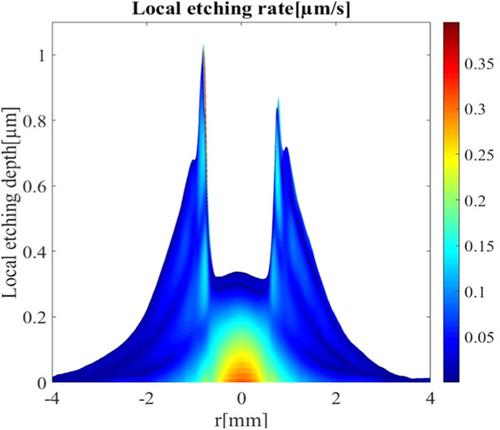当前位置:
X-MOL 学术
›
Plasma Processes Polym.
›
论文详情
Our official English website, www.x-mol.net, welcomes your
feedback! (Note: you will need to create a separate account there.)
Development of a model for ultra‐precise surface machining of N‐BK7® using microwave‐driven reactive plasma jet machining
Plasma Processes and Polymers ( IF 2.9 ) Pub Date : 2019-08-22 , DOI: 10.1002/ppap.201900119 Faezeh Kazemi 1 , Georg Boehm 1 , Thomas Arnold 1, 2
Plasma Processes and Polymers ( IF 2.9 ) Pub Date : 2019-08-22 , DOI: 10.1002/ppap.201900119 Faezeh Kazemi 1 , Georg Boehm 1 , Thomas Arnold 1, 2
Affiliation

|
In this paper, extensive studies are conducted as key to overcoming several challenging limitations in applying fluorine‐based reactive plasma jet machining (PJM) to surface machining of N‐BK7®, particularly regarding the manufacture of freeform optical elements. The chemical composition and lateral distributions of the residual layer are evaluated by X‐ray photoelectron spectroscopy and scanning electron microscopy/energy‐dispersive X‐ray spectroscopy analysis aiming at clarifying the exact chemical kinetics between plasma generated active particles and the N‐BK7 surface atoms. Subsequently, a model is developed by performing static etchings to consider the time‐varying nonlinearity of the material removal rate and estimate the local etching rate function. Finally, the derived model is extended into the dynamic machining process, and the outcomes are compared with the experimental results.
中文翻译:

使用微波驱动的反应等离子体射流加工技术开发用于N‐BK7®的超精密表面加工模型
在本文中,进行了广泛的研究,以此作为克服将氟基反应等离子体射流加工(PJM)应用于N‐BK7®的表面加工的几个挑战性限制的关键,特别是在制造自由形式的光学元件方面。通过X射线光电子能谱和扫描电子显微镜/能量色散X射线能谱分析来评估残留层的化学成分和横向分布,旨在阐明等离子体产生的活性粒子与N-BK7表面原子之间的确切化学动力学。 。随后,通过执行静态蚀刻来开发模型,以考虑材料去除率随时间变化的非线性并估计局部蚀刻率函数。最后,将导出的模型扩展到动态加工过程中,
更新日期:2019-08-22
中文翻译:

使用微波驱动的反应等离子体射流加工技术开发用于N‐BK7®的超精密表面加工模型
在本文中,进行了广泛的研究,以此作为克服将氟基反应等离子体射流加工(PJM)应用于N‐BK7®的表面加工的几个挑战性限制的关键,特别是在制造自由形式的光学元件方面。通过X射线光电子能谱和扫描电子显微镜/能量色散X射线能谱分析来评估残留层的化学成分和横向分布,旨在阐明等离子体产生的活性粒子与N-BK7表面原子之间的确切化学动力学。 。随后,通过执行静态蚀刻来开发模型,以考虑材料去除率随时间变化的非线性并估计局部蚀刻率函数。最后,将导出的模型扩展到动态加工过程中,











































 京公网安备 11010802027423号
京公网安备 11010802027423号